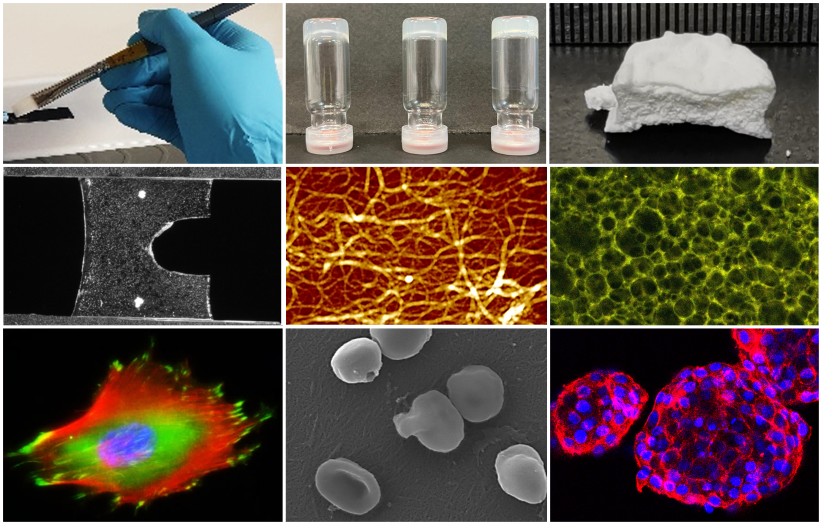Institut Charles Sadron IRIS
Research

From synthesis…
Peptides and polymers are macromolecules whose structure can be controlled in terms of composition, functionality, and topology. Our team has a solid expertise in custom synthesis of these macromolecules, either individually (peptide or polymer) or in combination (peptides conjugated to polymers).
Solid-phase (manual and semi-automated) synthesis is our main approach to synthesize peptides. Combinatorial chemistry is also used within the team to synthesize and screen a large number of peptide sequences.
Polymer chemistry offers a wide range of step and chain polymerization techniques. We put them to good use in our projects, relying in particular on macromolecular engineering to modulate polymer properties, or exploring the preparation of hybrid materials.
… to materials …
Peptides and/or polymers are used to develop materials ranging from multilayer films and gels to nanofibers, porous materials, and coacervates. These materials are based on covalent networks and self-assemblies between either identical or different (macro)molecules interacting through different types of inter- and intramolecular interactions.
The physicochemical study of these materials enables us to gain a deeper understanding of their properties. We are particularly interested in their organization, their viscoelastic and mechanical properties, their behavior in the presence of a stimulus, and so on. Our work is carried out in collaboration with researchers with complementary experimental (light and X-ray scattering) and theoretical (simulations) expertise.
… for health and the environment
In addition to fundamental studies, we also aim to meet the needs of the society by tackling societal challenges related to health and the environment.
Peptides, polymers and materials resulting from them are good candidates for biomedical applications: tissue engineering to replace or repair biological tissues, drug delivery systems (gene therapy, vectorization of anti-cancer agents, etc.), antibacterial surfaces to limit nosocomial infections, and so on. Our macromolecules and materials are studied in microbiology and cell culture by our collaborators.
With a view to propose more sustainable solutions, we are interested in various more environmentally-friendly alternatives, such as the use of deep eutectic solvents or the development of greener construction materials.
